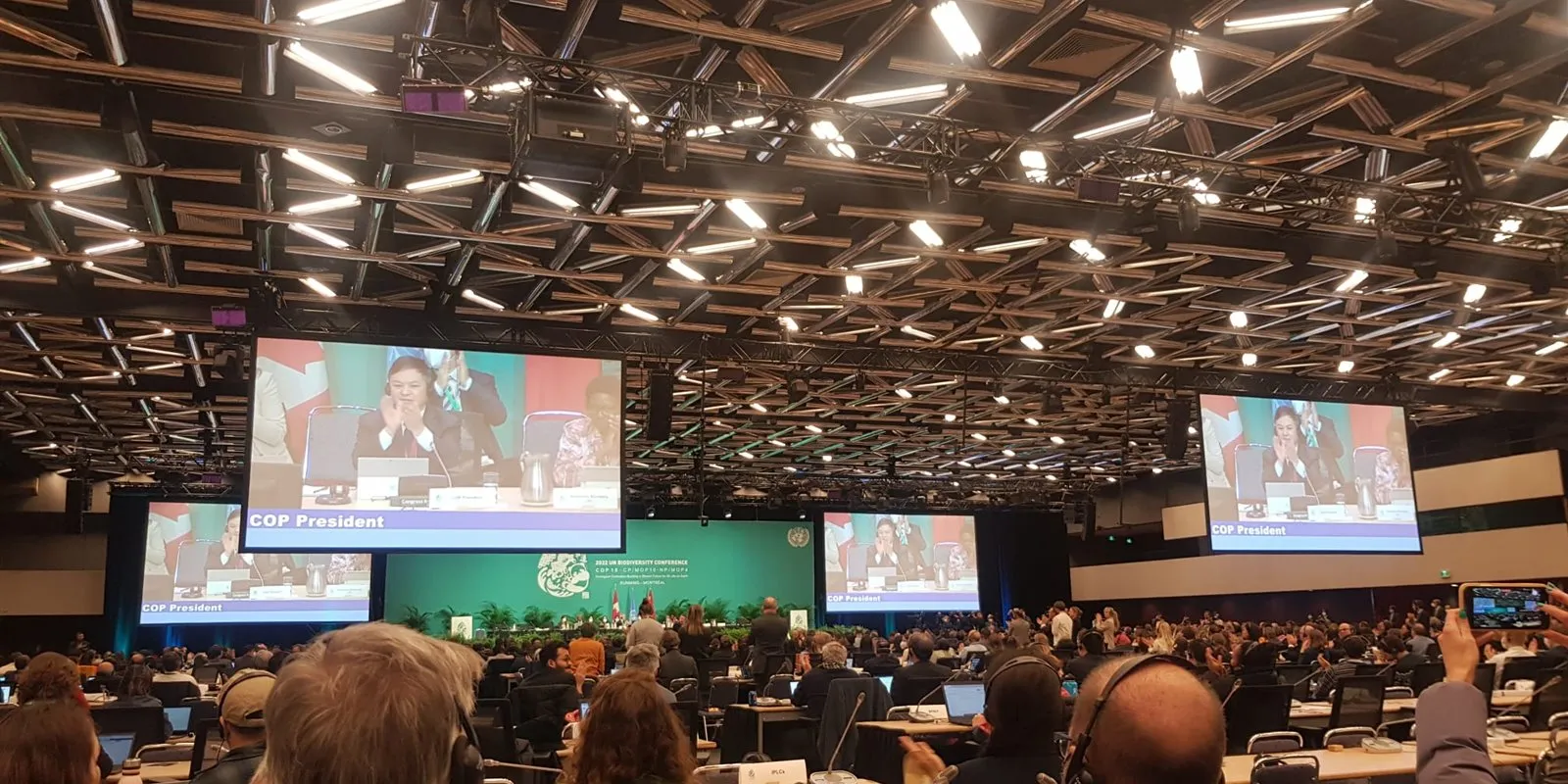News
White-tailed Eagles disappear in suspicious circumstances
We’re offering a £10,000 reward for information that leads to a conviction in these cases.
Last December, almost 200 nations reached a landmark deal to halt and reverse the loss of nature by 2030. Now, exactly a year on, we look at the impact of this agreement and what's been achieved in the UK.

Last December, almost 200 nations reached a landmark deal to halt and reverse the loss of nature by 2030. Now, exactly a year on, we look at the impact of this agreement and what's been achieved in the UK.
Today’s blog is written by Fiona Dobson, Senior Advocate in the RSPB’s Global Policy Team, to reflect on progress one year on from the Convention on Biological Diversity (CBD) COP15.
The global plan agreed at COP15 was called the Kunming-Montreal Global Biodiversity Framework. It includes four global goals and 23 targets to drive action over the next decade, with a mission of halting and reversing the loss of nature by 2030. It’s not perfect (no international framework ever will be!), but it lays a critical foundation for turning the tide of nature loss.
A key first step is to turn the Kunming-Montreal Global Biodiversity Framework into national plans for action. Every country is obliged to revise its plan – formally called a National Biodiversity Strategy and Action Plan (NBSAP) – to bring it in line with new global framework.
A series of initiatives have been set up to help countries to do this, such as the NBSAP Forum, and grants from the Global Environment Facility. But there are real concerns that there is not enough urgency. The deadline for submission is before the next COP in October 2024, yet only five NBSAPs have been submitted so far.

At COP15, the UK was very vocal about the need to agree an ambitious plan for nature. The UK negotiators worked hard to drive strong outcomes, with several UK ministers in attendance, including from the Treasury.
From this strong start, is the UK still in a place to lead the pack? Wildlife and Countryside Link – the largest environment and wildlife coalition in England, of which the RSPB is a part – has just released an assessment to answer this question. In collaboration with lots of experts, they’ve developed a progress tracker to review how Westminster has fared so far. Their conclusion: our decision makers have been ‘in hibernation’ and it’s time for a wakeup call.
Out of the 18 targets assessed, none are currently on track to make good progress. Instead, action on 12 of the targets has stalled or is going backwards. This includes:
the targets on climate change (with the Prime Minister’s backtracking on net zero pledges);
pollution (with disappointing action related to pesticides);
agriculture (with new agricultural policies plagued by delays and lacking ambition and coordination) and;
restoration of marine habitats (with continued harmful activities such as dredging and oil and gas exploration in Marine Protected Areas).
Beccy Speight, RSPB CEO, commented: “This dismal progress report should set alarm bells ringing for all our political leaders. The action plan agreed in Montreal to halt and reverse the loss of nature by 2030, which the UK championed, was a critical moment for the future of our natural world. Yet success hinges on these global commitments being translated into action at home. The fact that progress towards two-thirds of the targets assessed has either stalled or gone backwards in England must be a wake-up call for politicians across all parties.
It is clear that fighting for the wildlife and greenspaces we love has never been more important. Nature can’t wait and it is only immediate, decisive action that will put us on the right path to restoring nature for the sake of all people and our planet."
On top of this poor report card, there also appears to be a lack of ambition to improve. Right now, every country must be working to revise their National Biodiversity Strategy and Action Plan (NBSAP) in the wake of COP15. But from what we know about the development of the UK’s, it risks just being a rehash of old promises, without new plans to fill gaps.
Instead, this could be the perfect opportunity for the UK to genuinely show its leadership credentials, with the four countries of the UK working together to produce an ambitious and coordinated NBSAP. Essentially, this is all about pace and scale of action; we must act with greater urgency and at a greater scale of ambition.
Below we set out recommendations for key areas where the UK is currently falling short, but where the UK NBSAP presents an opportunity to step up:
It’s been over three years since the UK government promised to protect 30% of land and sea for nature, yet progress remains slow and unclear. Now that the UK has reiterated this commitment through championing the agreement of Target 3 of the global framework, it’s time to see action. This should follow robust criteria to genuinely deliver the necessary effective protection and management of land and sea, with measurable positive outcomes for nature. The NBSAP should include, or point to, an assessment of the scale of resource needed, and where this will come from.
Species recovery is fundamental to achieving the 2030 mission of the global framework. Goal A commits countries to increasing the abundance of native wild species to healthy and resilient levels by 2050. It is essential that action is taken now, to set the trajectory to achieve that goal by mid-century. In the UK, we know that species abundance has been in shocking decline and yet not all UK governments have set legally binding targets to recover species abundance. The UK NBSAP should put forward these targets, and match them with costed delivery plans.
Agriculture is the most significant driver of biodiversity loss in the UK. And yet through a change in approach, our farmland has the potential to drive the recovery of nature rather than its decline. Target 10 of the global framework commits countries to ensure that areas under agriculture are managed sustainably. The countries of the UK must put this into practice, and through the NBSAP put forward plans to reform food and farming policy to support nature positive farming and transform the way we manage land.
In the 2019 UK Marine Strategy Assessment, 11 of the 15 indicators used to determine the health of our seas failed to achieve Good Environmental Status. But with progressive action, our seas can be restored to thriving ecosystems that benefit nature, climate and people. The NBSAP should include commitments and action plans for the protection and conservation of marine ecosystems, including plans for fisheries to be managed so that they support thriving seabird populations, and benefit nature and the climate.
At 3.33am on 20 December 2022, a real sense of hope shone through our exhaustion when the new global framework for nature was agreed. One year on, that hope still flickers, but it’s burning low.
Let’s make 2024 the year when we finally get into gear, and make strong, urgent strides in the journey to put nature on a path to recovery!
You can help turn these ambitions into reality by asking your elected representative to put nature at the heart of their decision-making. You can find all the support you need on our Nature Can’t Wait campaign hub.
Check out our A World Richer in Nature report to find out more, where we set out what is needed in each of the UK’s countries to meet global commitments. The full report is available by clicking ‘English Version’ or ‘Welsh Version’ here.

For more information about the Kunming-Montreal Global Biodiversity Framework.